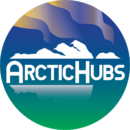November newsletter: ArcticHubs’ serious game takes a step forward in Iceland
📌 Our November 2024 newsletter is now live, packed with exciting updates and achievements. 🔍 What’s Inside? Serious game expansion in Iceland Dive into how ArcticHubs’ digital ‘serious game’ is breaking new ground, fostering innovative collaboration in Iceland’s Westfjords. This interactive tool showcases the potential of participatory solutions in remote areas. Arctic Circle Assembly highlights Explore ArcticHubs’ contributions to the 2024 Arctic Circle Assembly in Reykjavik, where the project shared …
